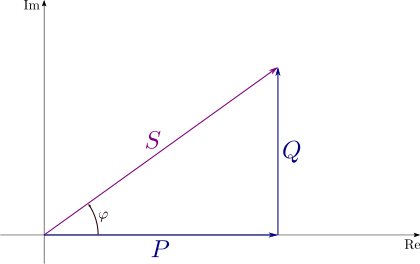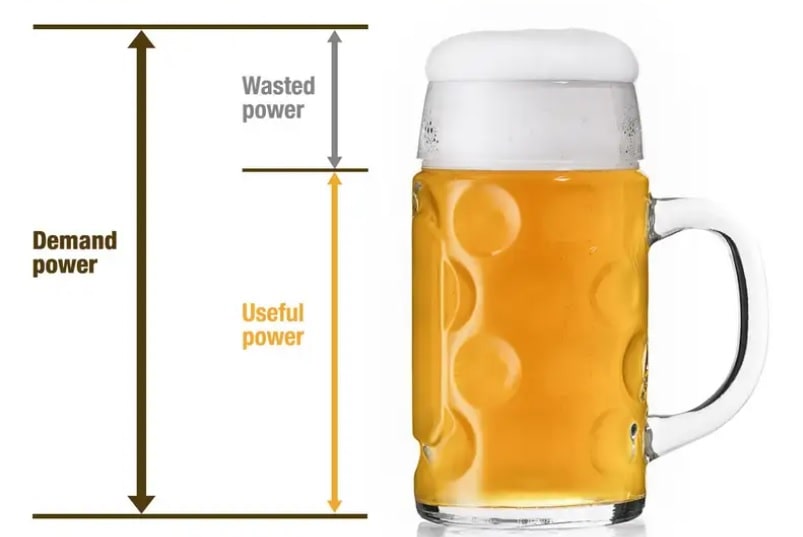If you are working in the metering domain, then it is necessary to know the AC Power (active, reactive, and apparent power). Let see some introduction of Active, Reactive, and Apparent Power.
Active power:
Active power is also called actual power, real power, or working power. It is the power that actually powers the equipment and performs useful work. It is measured in kilowatt (kW) or MW.
Reactive Power:
Reactive Power is the power that magnetic equipment (transformer, motor, and relay) needs to produce the magnetizing flux. Reactive power flows back and forth which means it moves in both the directions in the circuit.
The reactive energy produces an overload in lines, transformers, and generators, without producing a useful performance. However, it’s recorded in the bill, so it can considerably increase the total amount to pay. The reactive power is measured in kilo volt-ampere reactive (kVAR) or MVAR.
Apparent Power:
Apparent Power is the “vectorial summation” of KVAR and KW. The Apparent power is measured in KVA or MVA.
Power factor (cos φ):
The power factor is an expression of energy efficiency. It is the ratio of working power (Active Power), measured in kilowatts (kW), to apparent power, measured in kilovolt amperes (kVA).
Apparent power, also known as demand. It relates to the consumption of the active and apparent energy in an installation. The apparent energy also depends on active and reactive energy.
For the same consumption of active energy, the more reactive energy is used the less the power factor is and the more the economic penalty is (in case cosφ is under a specific value).
Let see the power triangle to understand the relationship between active, reactive, and apparent power.
In the mentioned image you can see that the complex power is the vector sum of active and reactive power. The apparent power is the magnitude of the complex power. let see the terminology which has been used In image,
- P => Active power
- Q => Reactive power
- S => Complex power
- |S| => Apparent power
- φ => Phase of voltage relative to current
Therefore, the following expression shown below gives the active, reactive, and apparent power respectively.
- Active power P = V x I cosϕ = V I cosϕ
- Reactive power Pr or Q = V x I sinϕ = V I sinϕ
- Complex power S = P + jQ
- Apparent power = |S| = √P² + Q²
Let’s see all the concepts with a simple Beer analogy for better understanding. Suppose you order up a mug of your favorite beer. You will see along with beer there is some little bit of foam present in mug. So if we categorized beer mug in 3 parts then, Beer is like active power (KW), the foam is like reactive power(KVAR ) and the mug like apparent power (KVA). See the below image.
Recommended Post
- Active vs Reactive power
- SSL vs TLS.
- Difference between HDLC and PPP.
- HDLC protocol.
- Transport Layer Security (TLS)
- SSL programming in C.
- Socket programming in C.
- Parse XML response in C without using the library.
- Create Http Get and Post request in C.
- File handling in C.
- I2C Communication protocol.
- Embedded C Interview Questions.
- Pointers in C.
- CAN Protocol Interview Questions.
- Bit-wise interview Questions in C.




One comment